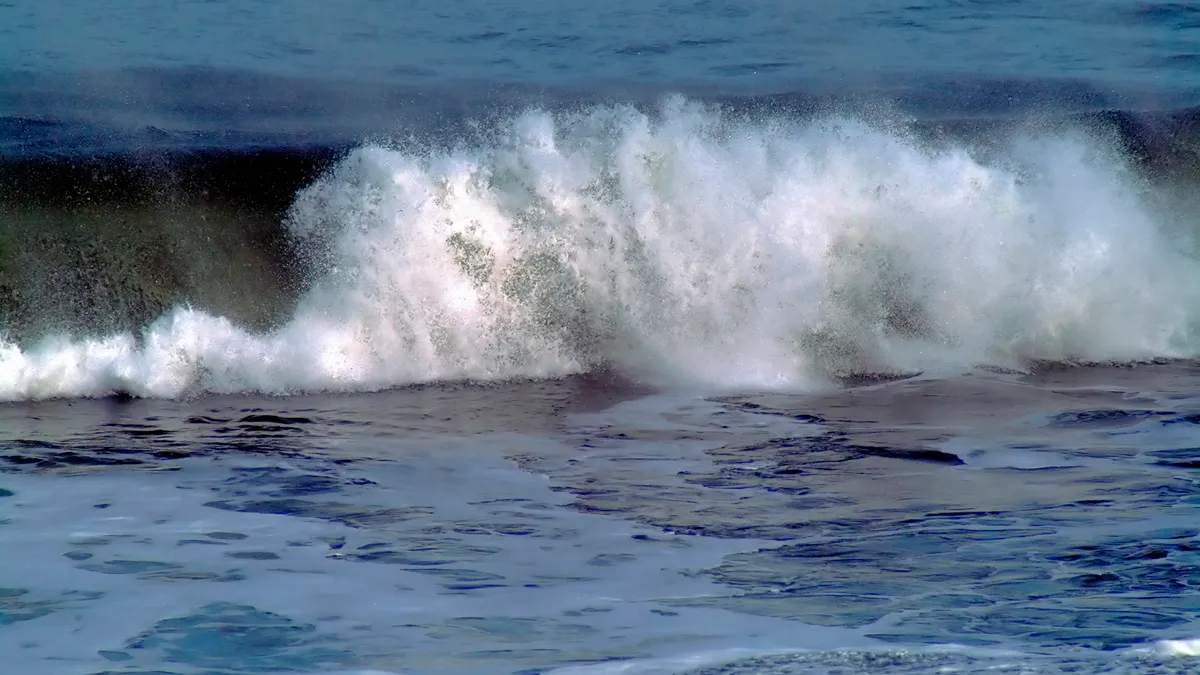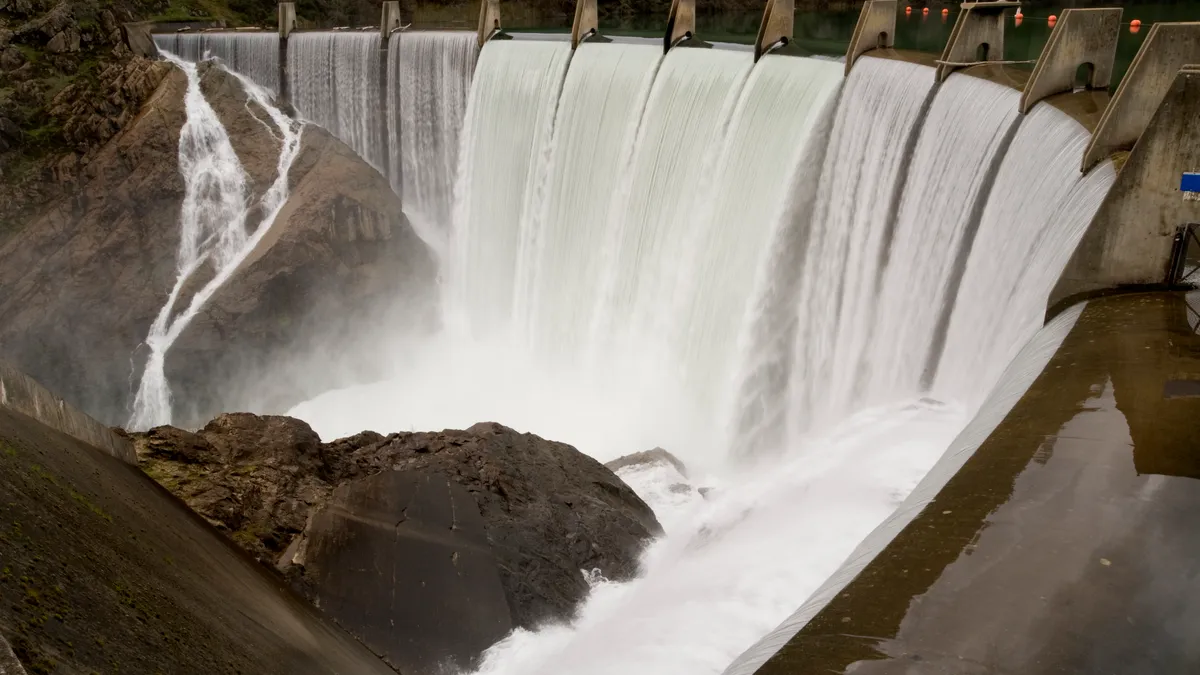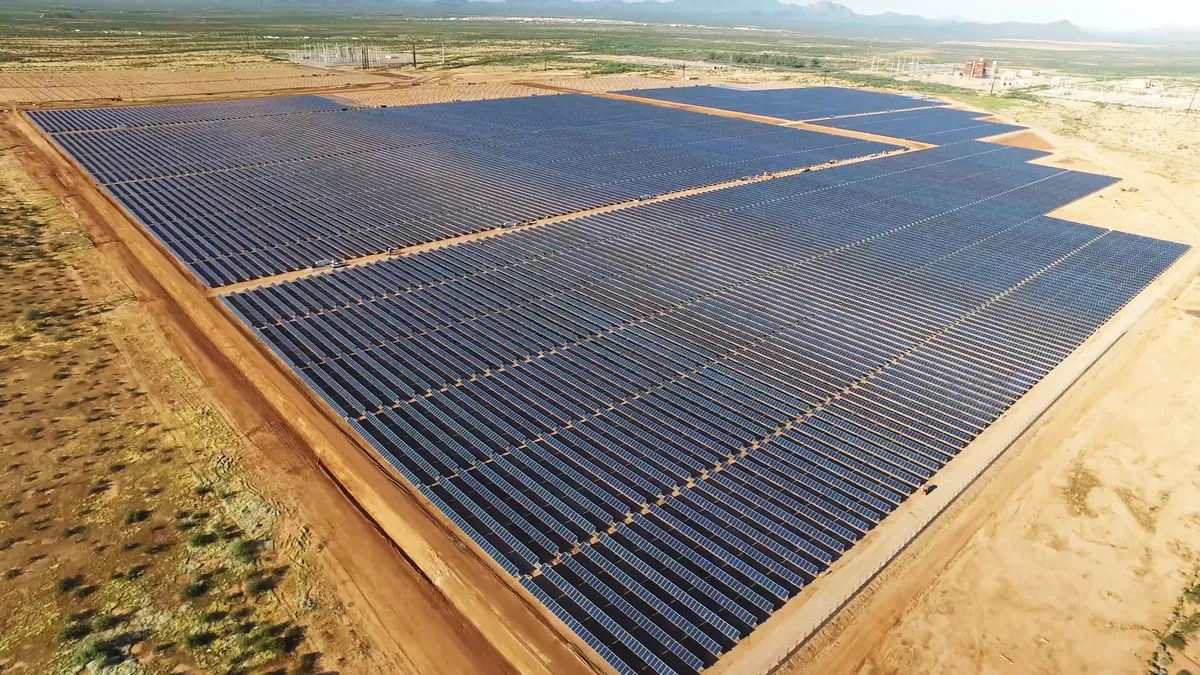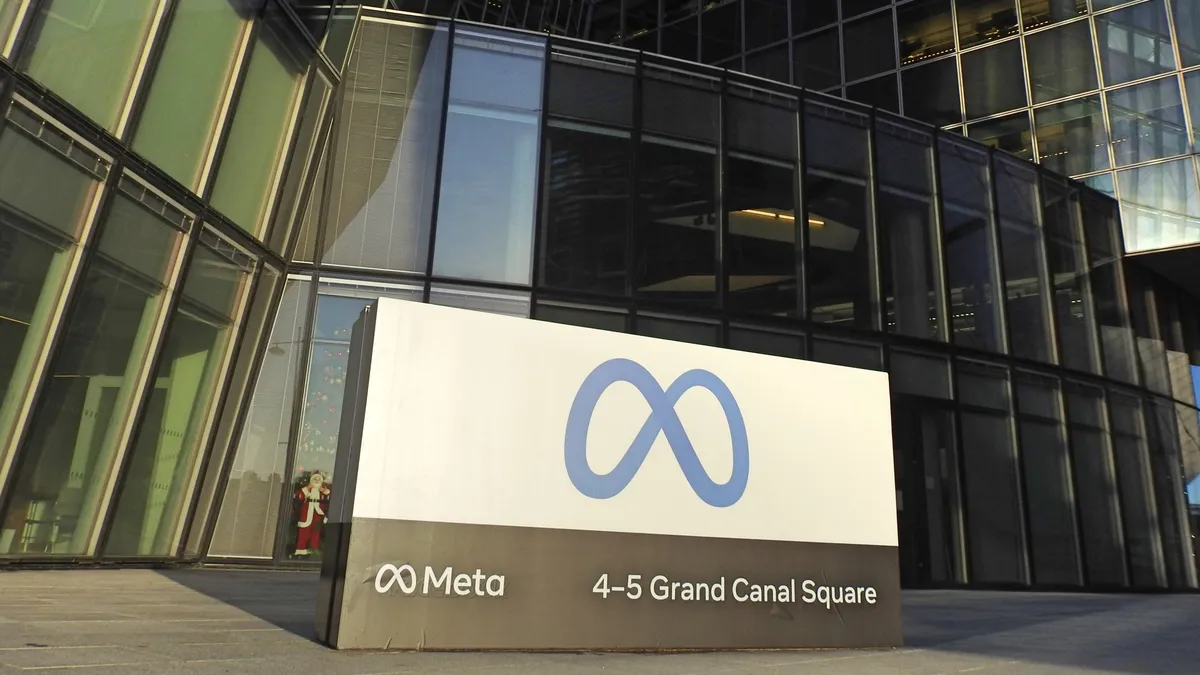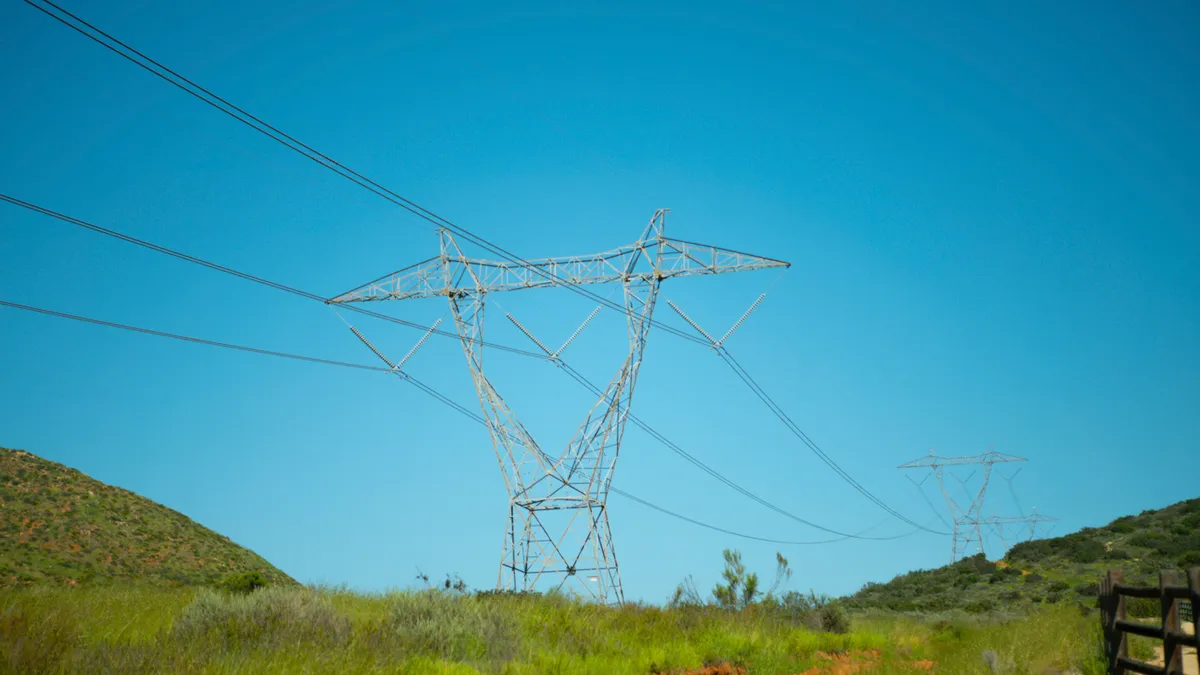Though the marketplace has backed off from wave, tidal, and current energies, the Obama Energy Department has rebooted its effort to grow them.
These marine hydrokinetic (MHK) energies could potentially provide power for more than half of the U.S. population that lives along the coast, but they have one big barrier: No one’s come close to developing a cost-effective model for MHK deployment in the U.S.
The people in DOE’s Water Program persist even though they see the failures in early efforts to commercialize the potential of waves, tides, ocean currents, river flows and marine thermal gradients. Though the marketplace remains dubious, DOE has a plan to turn potential into reality.
“Utilities and major investors were brought in on this technology some years ago with big promises from vendors but the vendors did not deliver,” said Stewart Bible, team leader at Harvest Wave Energy, an MHK startup. “The utilities and investors remain snake-bitten.”
One of the major U.S. utility efforts validates Bible’s point. Despite $12 million in funding for tidal research from DOE and other agencies and its own $4.4 million investment, Snohomish County Public Utility District decided to cancel its effort in 2014, said Spokesperson Neil Neroutsos.
“The research was important but project costs got too high and it became too cumbersome to move forward,” he told Utility Dive.
That experience is not a unique one. From 2008 to 2015, DOE’s program awarded an estimated $136 million for 92 MHK energy projects, according to the Department’s recent project update. Yet there are no U.S. commercial installations and few pilots with real promise.
Aware of such failures, the DOE Water Program is “trying to reboot, prove we can get techno-economic performance, and then bring those stakeholders back in,” Bible said. “Conversations about commercialization will come after that.”
Radical innovation
Bible’s company is one of nine finalists in DOE’s 20-month Wave Energy Prize competition, which pushes companies to design, build and test MHK technologies that could scale up to commercial deployment.
DOE is asking for radical innovation from Wave Prize competition entrants, said Mike Morrow, CEO of M3 Wave, another finalist. The $1.5 million first prize will go to the technology that goes farthest beyond the minimum threshold of doubling the amount of power from a marine source per unit cost. Prizes of $500,000 and $250,000 will go to others that beat the threshold.
DOE envisions using the wealth of U.S. ocean and river resources to build a cost-competitive MHK industry that would diversify the nation's energy portfolio and expand U.S. marine energy companies into global markets, an Energy Department spokesperson emailed Utility Dive.
To realize its vision, DOE wants to drive near-term deployment in “early-adopter and distributed generation markets.” Those markets are primarily in "coastal population centers where the price of electricity is high and in alternate and niche applications," the spokesperson wrote.
Long term, the goal is “deployment in large-scale utility markets.”
“DOE has seen the value and stepped up,” said Alex Hagmuller, founder of AquaHarmonics, another competition finalist.
The three “core” obstacles to MHK energy growth are “technology maturity, deployment barriers, and market development,” DOE’s spokesperson noted.
But niche markets may be opening up for these less mature technologies and that could break down deployment barriers, said Tim MacDonald, team leader for competition finalist Sea Potential.
Unlike most renewables, which are pure energy plays, wave energy could have multiple applications, said MacDonald, an attorney who specializes in renewables. Sea Potential has begun exploring potential alternative revenue streams from using its 1 MW buoys as platforms to host and power scientific and national security communication electronics at sea.
Efforts by the U.S. Navy and the National Oceanic and Atmospheric Administration to use solar and wind for those purposes have been unsatisfactory.
“Our primary purpose is to get to utility-scale generation,” MacDonald said. “But it is reasonable to say that getting to where wind and solar are is a multi-year undertaking.”
Immense potential
Recent analysis shows the “technically recoverable” potential of MHK resources is immense. For wave energy alone, it’s between 898 TWh and 1,229 TWh each year, accessible along each major American ocean coastline, according to a recent study commissioned by DOE.
“If only 5% of the potential is recovered, millions of homes could be powered by wave energy,” DOE’s spokesperson pointed out. A single TWh of electricity is typically considered enough to power about 92,000 homes.
There is an additional technically recoverable 222 TWh/year to 334 TWh/year from U.S tidal energy sites and 45 TWh/year to 163 TWh/year in ocean current sites along both the Atlantic and Pacific coasts, according to a DOE study. The Mississippi River contains almost half the potential U.S. river current energy of up to 120 TWh/year. There is also an estimated 576 TWh/year of recoverable ocean thermal energy in U.S. waters.
Though actual deployment numbers are never likely to approach the “technically recoverable” numbers, they give a sense of the massive potential of such technologies. Even the low end estimates add up to more than 1,8000 TWh annually — nearly half of the 4,000 TWh the U.S. consumes each year.
But whether it’s the U.S. or elsewhere, deployment numbers pale in comparison to the potential.
Global MHK energy installed capacity at the end of 2014 was approximately 530 MW, mostly from tidal energy installations, according to REN 21’s Renewables 2015 Global Status Report.
The world’s potential is estimated to be from 20,000 TWh to 80,000 TWh of electricity per year, which would be 100% to 400% of current global demand, according to the International Renewable Energy Agency (IRENA) 2015 ocean energy report.
Early European wave energy technologies obtained utility backing, IRENA reported. German utility E.ON and Scottish Utility SSE have backed away, but Finland’s Fortum, Spain’s Iberdrola, ScottishPower Renewables, France’s EDF, and Sweden’s Vattenfall continue to work with prototypes.
"The contribution of ocean energy to the global energy mix now and in the next five years remains very small, with technologies still in the development and demonstration phases," IRENA acknowledged.
But some in the industry see a brighter future. The projected $200 billion market for global renewable energy and 14-year Compound Annual Growth Rate of 27.6% suggest a potential market size for wave energy systems of more than $10 billion by 2030, Harvest Wave Energy estimates, if they can be successfully commercialized.
Two technologies approached commercial success in the UK — Pelamis Wave Power and Aquamarine Power — Hagmuller said. But both seemed to move ahead too fast and ran into financial difficulties.
“Pelamis should have spent more time optimizing,” the AquaHarmonics founder said. “But the backbone of wave technology is what we learned from the failure.”
Though spending has been cut back in Europe, it remains ahead of the U.S. in technology.
"The DOE reboot is a recognition that the U.S. is still at the Wright brothers stage of development,” Hagmuller said.
DOE reboot
In it's latest project update, DOE recounts where its efforts began.
“Before 2008, people saw the significant potential in the available MHK resources...[but] it became apparent that a government role would be beneficial to help remove some of the barriers to industry commercialization.”
DOE has funded projects in 24 states, with over 30% of that going to Maine, Oregon, and Hawaii. But over 85% of the funding for the 92 projects DOE has supported has gone to Technology Development and Market Acceleration. Projects aimed at Deployment received only 11% of the funding.
DOE's reboot is intended to spur independent providers to overcome obstacles to deployment. Beyond the Wave Energy Prize, it also includes $22 million of funding for marine energy demonstration and environmental monitoring technologies and a $10.5 million allocation of durability and survivability advances.
Congress and the White House have been supportive of funding requests for MHK energy research, development, and demonstration, DOE’s spokesperson said. Provisions in the Obama administration 2017 budget and in Senate and House energy bills are now working their way through the legislative process.
The 20 states that count MHK energy toward their renewables mandates are important, DOE’s spokesperson said. There is also a $0.01/kWh federal Production Tax Credit for projects of at least 150 kW in nameplate capacity and a 10% Business Energy Investment Tax Credit for tidal energy projects. Some states, including Alaska and Oregon, offer added incentives.
The innovators' perspectives
The Wave Prize finalists see the reboot as opening the door to wave energy innovation.
Harvest Wave Energy
DOE is going back to step one because the companies that had been moving toward commercialization are now stuck and no one will invest in their technologies, Harvest Wave Energy’s Bible said. The focus is now on techno-economic performance so the products its investments produce will attract investors.
“What has been tried to this point has not come close to economic competitiveness and most of the products that failed were buoy type point absorbers,” Bible said. “We decided that bottom-hinged, oscillating wave surge collectors produce the best techno-economic performance."
But even the competition finalists remain a long way from commercialization, he added.
“Technologies that meet the competition’s economic standard, get the right financial backing, and develop a good business strategy might be marketable in around five years.”
M3 Wave
For M3 Wave, the newest devices are so innovative they do not fall into traditional technology categories because they were built on lessons learned and designed to be more cost effective, Morrow said.
The key lessons learned are that the ways to bring the cost per kWh down are to make the device easier to deploy, more survivable, and easier to maintain, he said.
“Our technology sits on the bottom where there is less energy. But it is more survivable because there are no exposed moving parts,” Morrow said. “New companies learn that the ocean eats man-made things for breakfast. It is not a forgiving place.”
After working on ocean energy designs for over two decades, Morrow has concluded that “we will not have utility-scale wave energy powering coastal communities any time soon in the Pacific Northwest because the price of energy is just too low for it to be economically viable.”
Like other companies in the field, M3 Wave is looking at markets where there is no alternative or the price of power is exceptionally high. On islands and in isolated communities, the electricity price can be $0.30/kWh and more.
“At those prices, we can start to get competitive,” Morrow said. “That would allow us to prove deployability and survivability.”
Sea Potential
While the M3 technology sits on the ocean floor, Sea Potential took a different approach. To benefit from both the heave and the pitch-surge motions of waves, the Sea Potential's DUO connects fixed and floating oscillating bodies with angled pre-tensioned cables. The design allows power generation from both wave motions, increasing the energy capture per unit cost.
There could be important repercussions to potential secondary revenue streams derived from the fixed buoy's use in niche applications like serving as a platform for meteorological, oceanographic, and military electronics, MacDonald said.
“We see this as a stimulus for an economy that needs to be rejuvenated in our home base in Bristol, Rhode Island,” he said. “Roger Williams University and the community have supported us and we want to give back to them through this industry.”
Other niche opportunities MacDonald has been exploring are in aquaculture and ocean ecosystem protection. “Instead of a threat, wave energy technologies might be a safe haven for ocean life.”
AquaHarmonics
“To enhance survivability, AquaHarmonics’ “next generation” point absorber buoy technology seals its mechanical engineering inside a protected compartment.
Getting energy from waves is not new or different and there are many ways to do it, Hagmuller said. “The question is, can you do it economically? The competition is to find the most economical technology.”
The wind industry is a long way down the road to “optimizing” its turbine technology, he noted, but the wave energy industry does not yet know what its standard technology “will even look like.” It might turn out to be “different for different applications and locations.”
Because of Pelamis, “we have a much more realistic understanding of how to test for what is economically viable and we know estimates through numerical analysis are incorrect but we don’t yet know how incorrect they are,” Hagmuller added.
The industry must expect more failures along with the successes that are ahead, he believes. And it cannot expect private investment support. “They want a quick return on their money and that is not going to happen in wave energy.”
The next step in the competition requires a real world test of a one-twentieth scale prototype. If Aquaharmonics were to win the funding, it would have to do further numerical analysis and tank testing of a one-fourth scale prototype, Hagmulller said.
More tank testing of a redesigned device and another year of real-world testing would follow. That would lead to another year of technology development and more real-world testing, he went on. “Getting through all that and the permitting and grid connection processes to a real world test of a full-scale device would probably take five to seven years.”
Because commercialization remains beyond the horizon, many in the industry are reluctant to say what their estimates of what a price per kWh might be, he added. “The industry has had too many ‘snake-oil salesmen’ promises. This technology is still too immature to even know what we might have wrong.”
CalWave
For the competition, CalWave Power Technologies, which is part of the Lawrence Berkeley National Laboratory Cyclotron Road program, redesigned its WaveCarpet device for deep water generation, according to project lead Marcus Lehmann.
Lehmann was unwilling to disclose details about the technology except to say that it does not fit any traditional categories and could be called a “next generation” technology.
He was also reluctant to talk about wave energy's future except to observe that wind and solar went through a series of development stages and the wave energy industry will also have to go through them.
Other finalists
The other four finalists in the wave power competition are Oscilla Power, RTI Wave Power, SEWEC, and Waveswing America. Those companies did not respond to inital Utility Dive requests for comment for this story.
The future of MHK
"The best case is we will be pursuing a 20 MW or 50 MW commercial, utility-scale installation in five years, and it most likely would be in California, Oregon, Washington, or Hawaii because they have big renewables mandates," Bible said.
Solar will become less competitive as its penetration rises because its high midday output will drive electricity prices down. Peak demand period power prices will, however, remain high, he said. Utilities will begin to see wave energy as competitive because it is a more steady and predictable resource.
“That transition in utilities’ perspective should start to happen in the next five years,” Bible said.
A really aggressive estimate of where his technology could get to in that best case might be as low as $0.08/kWh, Bible speculated. Wave energy cannot match the low costs of wind and solar, “but utilities can sell the electricity from wave energy during peak demand periods at perhaps twice what they pay for off-peak wind and solar.”
Both Morrow and MacDonald are looking to smaller markets.
“If we continue lowering the cost, we become competitive in secondary applications,” MacDonald said. We are years from utility-scale generation but potentially near revenue streams for hosting electronics and serving aquaculture.”
Investors, Morrow said, are “watching but they are not playing because the payback time is too far out for venture capitalists and institutional investors are waiting to see what bubbles to the top.”
Without private sector financial support, a full-scale M3 Wave prototype might have an LCOE of no better than $0.35/kWh to $0.40/kWh, he estimates. A 100 MW utility-scale build-out could bring the cost down to $0.15/kWh, but getting to the capital necessary to do that will require a series of smaller demonstrations.
“We need to go to applications where solar and wind are not a good fit,” he said. “Those small markets can be lucrative for small companies.”
In ten years, “there will be a couple of companies that have flourished in various niche markets, one with some island systems, and one or two providing power to the military,” Morrow added. “Getting the whole industry started and making millions of these devices to power cities is a heavy lift. It will take a great deal of financial commitment.”


